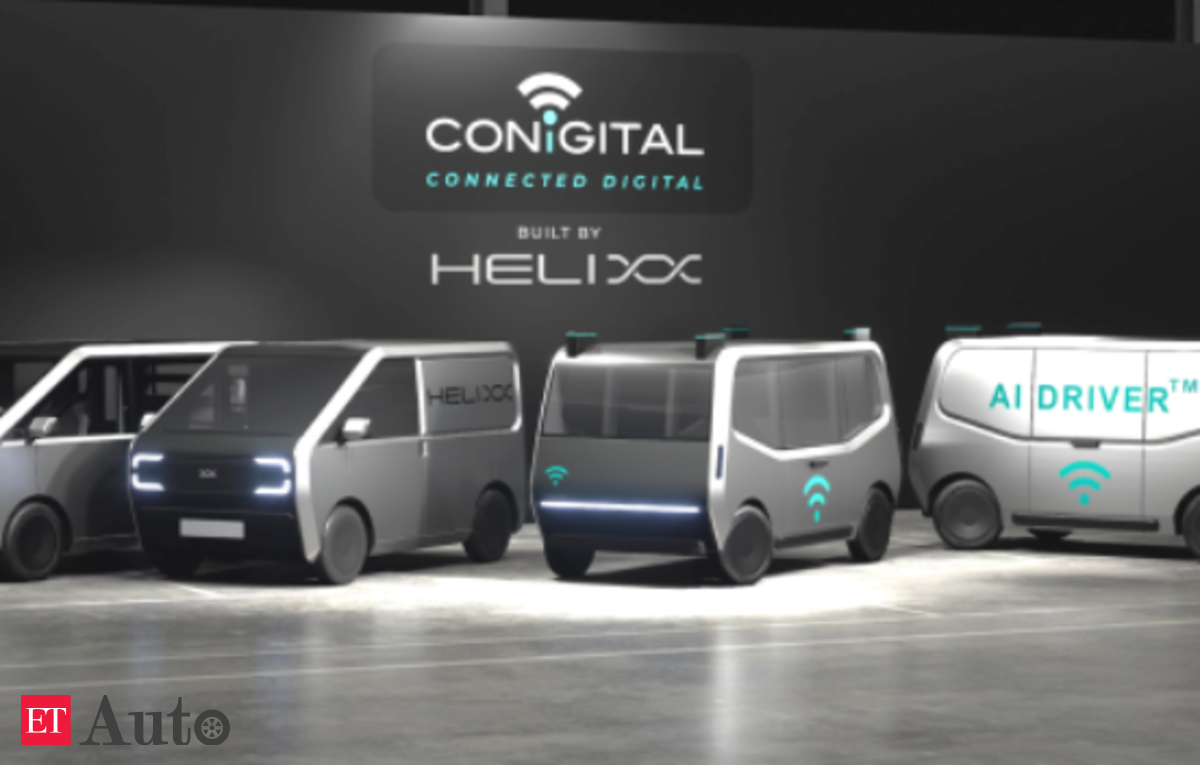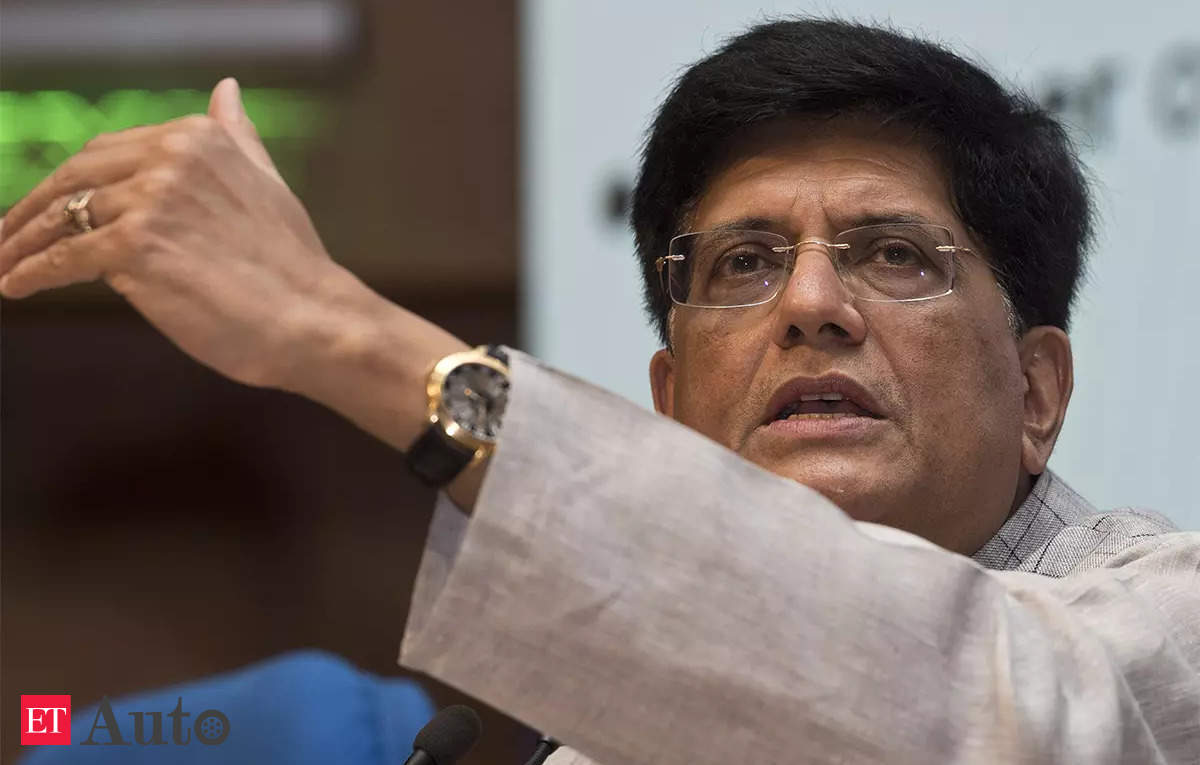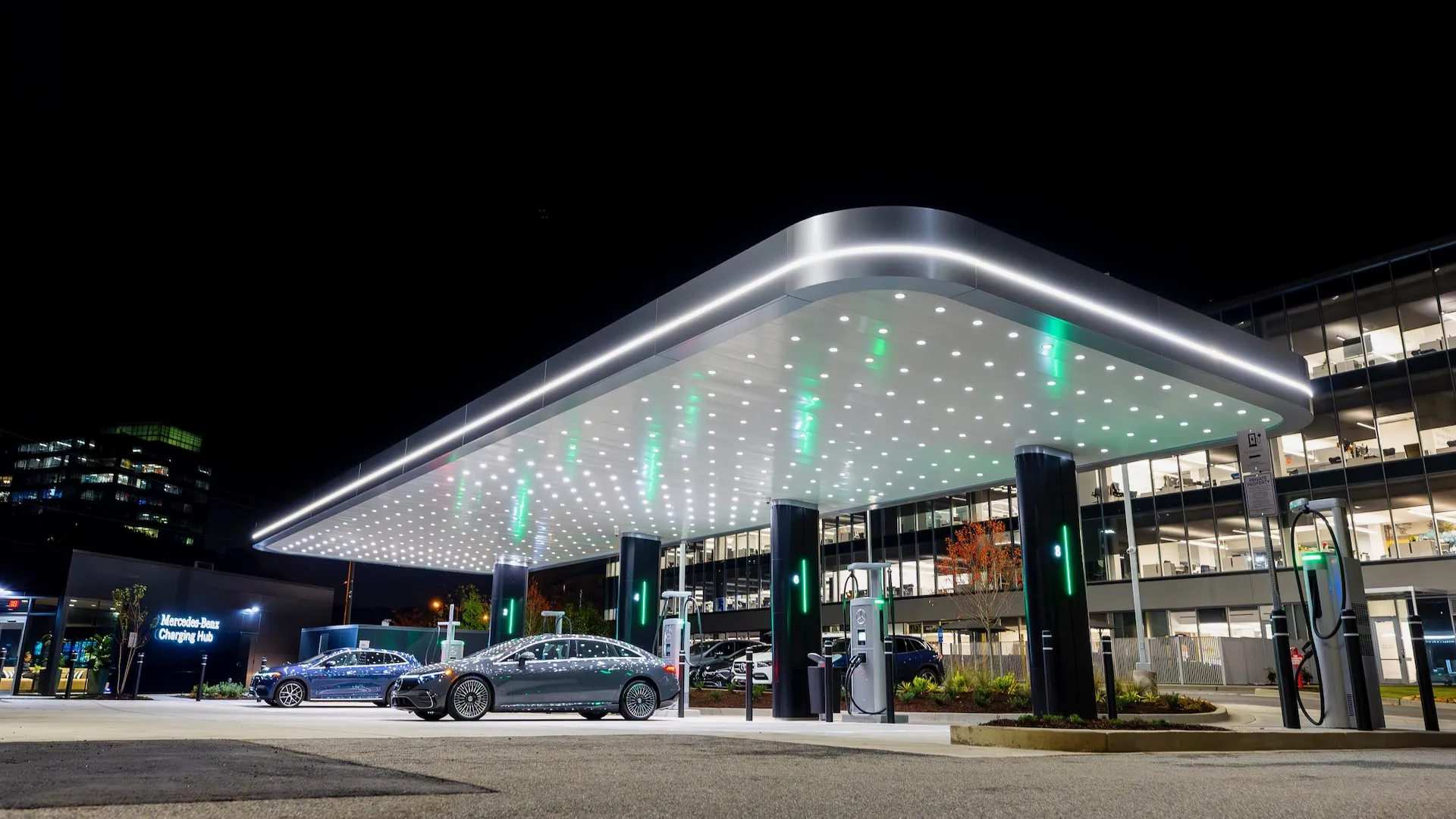Renault Group completed the first steps of its ‘Renaulution’ plan ahead of schedule, accomplishing the fastest turnaround in the recent history of the automotive industry.
Announced in November 2022, the current Revolution phase aims to transform Renault Group into a Next Gen automotive company built on five focused businesses addressing the new value chains arising from the transformation of the automotive and mobility industry: electric vehicles & software, new mobility services, circular economy, high-end vehicles in addition to ICE & hybrid vehicles.
Ampere is the driving force of the Group’s transformation: an autonomous company that designs, engineers, manufactures and markets electric passenger cars under the Renault brand in Europe. It aims to propel the Renault brand and position it as a leader in the new era of reaching zero-emission and software development.
Ampere’s ambition is to reach a double-digit market share with a double-digit operating margin, addressing the core vehicle segments in Europe by 2031.
On November 1st, 2023, Ampere ‘s carve-out was successfully completed. From Day 1, Ampere comprises 11,000 employees, of which 35% are engineers, focusing on EV and software technologies. Ampere benefits from strong assets for which most investments have already been made, including two EV-native platforms and a highly productive industrial ecosystem in France with low carbon emission standards: ElectriCity and Cléon.
Its structure is lean and efficient, enabling agile cooperation. Ampere is a data-driven company, built on technology, thanks to core IT platforms, completely connected, transparent and silo-breaking. It is led by a highly experienced Leadership team with expertise from global tech giants and international automotive companies.
A growth story thanks to cost advantage, complete product line-up and tailored customer experience
Democratizing EV in Europe addressing a broader customer base
As a leader in mid-size and compact cars in Europe, Renault Group, and therefore Ampere, is well positioned to address the B and C-segments that together are expected to represent 75% of the European EV market by 2030. These segments are forecast to grow by around 25% CAGR between 2023-2030.
To capture this opportunity, Ampere aims to democratize EV in Europe, by reaching EV / ICE price parity before competition in the B and C segments.
Ampere already has a major competitive advantage with its two EV-native platforms that are cost effective by design and fit-for-purpose:
- AmpR Small platform for the B-segment (previously CMF-B EV)
- AmpR Medium platform for the C-segment (previously CMF-EV)
Beyond these platforms, Ampere has a clear roadmap to reduce its cost, based on a holistic EV system approach. By 2027/2028, Ampere targets to reduce variable costs between the 1st and the 2nd generation of C-segment electric vehicles by 40%, following a continuous trajectory, along 3 main levers:
- EV engine (battery and e-powertrain):
- 50% reduction on battery cost per vehicle for the same range
- 25% reduction on e-powertrain cost per vehicle
- Vehicle (platform and upper body):
- 25% reduction in platform cost per vehicle
- 15% reduction in upper body cost per vehicle
- Operational excellence allowing a reduction of 50% of manufacturing and logistic costs
As a result of its continuous cost reduction plan, a first major step has been reached with Scenic E-Tech which is already at Total Cost of Ownership (TCO) parity with hybrid vehicles. The EV/ICE price parity is expected to be reached by 2027/2028 with the 2nd generation (Megane-E-Tech and Scenic E-Tech successors) while preserving margins. On the B-segment, Ampere will start with Renault 5 in 2024 and Renault 4 in 2025 (starting price of Renault 5 around €25k) and “Legend”, a new electric car below €20k (car to be revealed at the Ampere Capital Markets Day).
A complete product line-up
To achieve this objective, Ampere benefits from an exciting and competitive portfolio of A, B and C-segment cars initially consisting of five vehicles:
- Megane E-Tech, launched mid-2022, at a €38k entry price, is the vehicle that has repositioned the brand in the EV market and allows to conquer new customers (conquest rate from competition above 50% in Europe). It has a 2.2% of market share in the European EV market and is the number one car in the C-EV segment in France. This car benefits from a best-in-class infotainment and connectivity system: OpenR Link.
- Scenic E-Tech, on the market early next year with an entry price of around €40k, is the future of European family cars. Sustainability is at the core of its design with up to 95% of recyclable materials, offering a best-in-class range of over 625 km WLTP and a TCO already at par with hybrid cars.
- Renault 5, to be revealed in Q1 2024, is the rebirth of an iconic model already recognized by the press and social media. The Renault 5 will offer up to 400km of range for an entry price at around €25k competing with core hybrid B-segment cars. It will be equipped with the Reno avatar, a virtual copilot packed with artificial intelligence, learning from its users every day to better anticipate and answer their needs.
- Renault 4, to be launched in 2025, will be the reinterpretation of a universal car for the electric era. It will be a car with top versatility capitalizing on the winning ingredients of the Renault 5, such as the AmpR Small platform and the infotainment.
- “Legend”, unveiled today, is the fit-for-purpose urban vehicle with no compromise: best-in-class efficiency with only 10 kWh/100km, 75% lower CO₂ emissions than the average European ICE car sold in 2023 over its lifecycle, zero tailpipe CO₂ emissions and lower raw materials consumption thanks to its compact size. Made in Europe, the car will be offered at an entry price below €20k (before subsidies) which will represent less than €100 per month for our clients.
This line-up will be extended with two additional cars for the second generation, representing a total of seven vehicles by 2031. From a target of ~300,000 vehicles sales in 2025, Ampere expects to sell ~1 million vehicles in 2031, reaching a market share of ~10%.
Beyond its own line-up, Ampere is also designed to be a technological, manufacturing and business platform serving brands other than Renault thanks to the flexibility of the manufacturing lines, the modularity of the two platforms and the competitiveness of the cost base. Ampere will produce at least two models for Alpine, the next Micra for Nissan and another model for Mitsubishi Motors. Ampere will also support the Dacia electrification journey and will provide software solutions for the entire Renault Group.
A tailored customer experience beyond the product
Beyond the product, Ampere offers an exciting and reassuring customer journey. This is key as the EV market is shifting from early adopters to mainstream customers. For that, Ampere can rely on five strong assets from Day 1:
- Renault brand awareness of 98%
- Omnichannel customer experience: physical, building on Renault Group’s 4,700 dealership sites with 30,000 EV trained people all around Europe, and digital with the launch of a 100% online customer journey
- Renault Group’s unique aftersales network
- Comprehensive and sustainable charging solutions at competitive prices at home or on the road
- Mobilize Financial Services offers with financing solutions ranging from simple subscription for a few days to full leasing for several years
A story of technology excellence, innovation and partnerships
Software-Defined Vehicle Tech excellence
Moving to a centralized electronic architecture, being connected to the cloud, and having high calculation and connectivity capacities, SDV enables the permanent upgradeability of the car. It also allows a significant reduction in chip costs, an increase in the car’s residual value and it drives a stronger customer loyalty.
Ampere can rely, from Day 1, on 1,800 leading software and system engineering talents representing 50% of its total engineering workforce. Coming from the acquisition of Intel Europe in 2017, these engineers have strong expertise, facilitating development together with best-in-class tech players, Qualcomm Technologies and Google. Ampere’s team has developed a solution with Google, already embedded in the Megane E-tech and Scenic E-tech: OpenR Link. With this open approach, Ampere gets the best of both worlds: it retains the ownership of the IP and car data in Europe while benefitting from an environment that will ensure it will give its customers access to the ever-expanding universe of apps that make Google built-in so unique.
This horizontal approach enables Ampere to save time, cost, and reduce execution risk. In addition to sharing investments and securing competitive costs, it reduces development time by 50%, putting the cost of development on par with Chinese players and up to half of Western OEMs.
The first SDV is expected to be on the market in 2026.
Ready from Day 1 thanks to strong assets and Renault Group’s backing
Unique ecosystemic approach to cover the EV value chain
Ampere benefits from a unique ecosystemic approach to cover the full EV value chain with limited investments and technological agility, through partnerships with the best players for battery and e-powertrain development. Ampere is also a pioneer in zero-rare-earth
e-powertrain.
ElectriCity, local-for-local industrial footprint
Ampere’s manufacturing pole consists of four high-tech factories, ready Day 1, with a total capacity of 400ku/year, scalable to 620ku/year by 2028:
- ElectriCity:
- Douai and Maubeuge, two assembly plants to produce Ampere’s line-up and its partner’s models
- Ruitz to produce battery cases and electric components
- Cléon, being converted to become one of the biggest and most competitive European e-powertrain production sites
ElectriCity is a unique and compact ecosystem, grouping 75% of suppliers within a 300km radius and 75% of potential customers within a 1,000km range. This allows a reduction of logistic costs by 40%. Ampere’s manufacturing pole will deliver best-in-class productivity with a car assembly time of 9 hours, starting with Renault 5. Cost-wise, ElectriCity will be as competitive as Eastern European plants by 2025.
ElectriCity’s carbon footprint (industry scope 1 and 2) will be net zero by 2025. This will be achieved by following a clear decarbonization path based on the optimization of utilization rates, right-sizing, optimized energy management thanks to a 4.0 manufacturing system and digital tools combined with low carbon energy.
Renault Group and Ampere, a highly beneficial relationship for both sides
Ampere will leverage Renault Group’s other business units. It will benefit from complete financing capabilities (including insurance) from Mobilize Financial Services, the mobility and energy services (including charging) from Mobilize Beyond Automotive and the circular economy-related services from The Future Is NEUTRAL.
Leveraging the Renault Group ecosystem – Renault brand awareness, distribution network, manufacturing capabilities and procurement scale – is estimated to lead to cost avoidance in the magnitude of €15bn for Ampere.
This relationship between Renault Group and Ampere will be reciprocal and balanced in terms of flows and underpinned by clear arm’s length contractual agreements that fully ensure both companies’ interests are respected.










